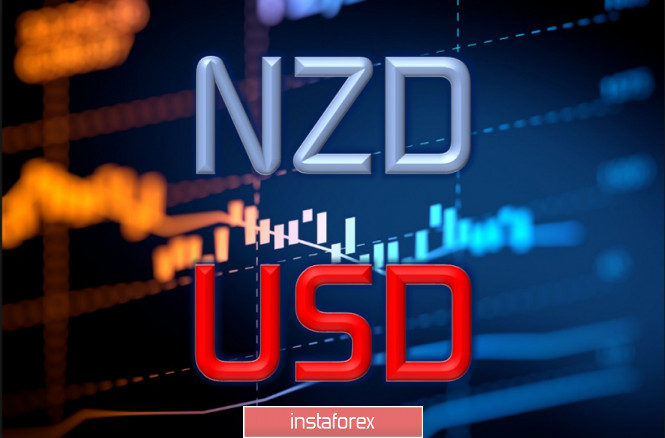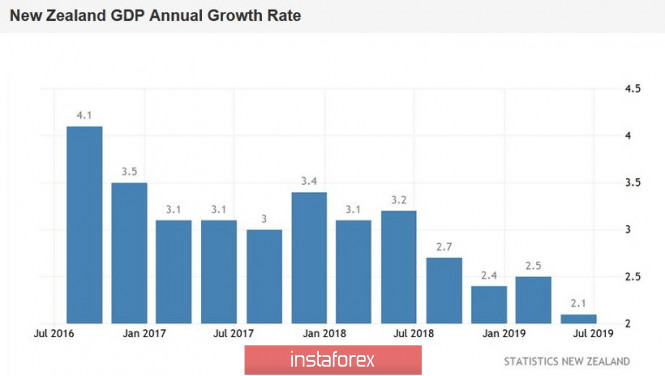At the end of last week, the New Zealand dollar paired with the US currency updated again its multi-year low and reached 0.6250, which was last seen in 2015. It is when the pair sank to the base of the 61st figure. To date, there is every reason to believe that the NZD/USD bears will push the price to the indicated levels, especially if tomorrow's RBNZ meeting will not be in favor of the Kiwi.

According to experts, the New Zealand regulator will leave the interest rate unchanged at 1% during the September meeting. Although, the market discussed at the end of August during (September 25 and November 13) the prospects for further rate cuts at one of the meetings remaining this year. Most traders are still confident that the RBNZ will resort to another round of monetary easing, ending the year with a rate of 0.75%. The only question is whether the regulator will surprise traders at tomorrow's meeting or whether they will prepare the markets for this step in advance.
Let me remind you that the RBNZ shocked the markets at the July meeting with a sudden decrease in interest rates by 50 basis points at once. At the same time, on the eve of the meeting of regulator members, quite strong data on the labor market in New Zealand were published, particularly the unemployment rate in the second quarter unexpectedly dropped from 4.2% to a record low of 3.9%. However, the Central Bank not only lowered the rate but also announced further steps in this direction. Moreover, the head of the Central Bank, Adrian Orr, did not rule out a reduction in the key interest rate in the negative region to -0.35%. According to him, the regulator implements this scenario without a shadow of doubt in the event of a crisis. At the same time, he added that asset purchases are "a less attractive policy mitigation tool" for him. In other words, Orr made it clear that he would not follow the path of his many colleagues, eliminating the use of QE. Nevertheless, he expressed his readiness to actively reduce the rate, including in the area of negative territory.
In my opinion, the Reserve Bank of New Zealand will take a wait and see attitude tomorrow but may hint at further actions in November. Given the latest foreign policy events and macroeconomic reports, such a scenario is most likely. New Zealand GDP growth data released on September 19 came out at a forecasted level, confirming a slowdown in the national economy. Therefore, the indicator grew to only 2.1% in the second quarter (in annual terms) and by 0.5% in quarterly terms. Thus, the growth of the New Zealand economy has slowed to its lowest level over the past five years, reflecting the effects of the global trade conflict. The nation reacts most sharply to the events of recent months, considering that China is the country's main and largest export market. Moreover, the general deterioration of the investment climate has affected other areas, such as the housing market and business confidence.

Thus, the latest data on the growth of the New Zealand economy has retained the likelihood of further interest rate cuts. The external fundamental background is also not pleasing with the latest events in Saudi Arabia as another source of geopolitical uncertainty. In turn, the United States and China are only just preparing to sit (once again) at the negotiating table. We will learn about the results of the meeting in early October if any "careless steps" do not disrupt the negotiation process. To date, the parties are taking friendly steps, demonstrating a willingness to dialogue but traders are wary of such situations with certain caution. Over the past year and a half, Beijing and Washington have been a few steps from signing a deal but everyone knows the final result.
Summarizing the above, recalling again that according to the general expectations of the market, the RBNZ will maintain the status quo tomorrow and keep the rate at a one percent level. At the same time, the regulator may announce further steps to reduce rates at its last meeting this year. This fact will put background pressure on the New Zealand dollar. If the Central Bank resorts to lower rates tomorrow, the July story of the NZD/USD pair will repeat when it impulse and lost hundreds of points.
From a technical point of view, the pair is under significant pressure and on all the "senior" timeframes. On H4, D1, W1, and MN timeframes, the pair is between the middle and lower lines of the Bollinger Bands indicator, which also indicates the priority of the southern movement. The pair shows a pronounced bearish trend, which is confirmed by the main trend indicators - Bollinger Bands and Ichimoku. Hence, the Ichimoku indicator formed its strongest bearish signal "Parade of Lines" on the daily chart. All the indicator lines are above the price chart, thereby demonstrating pressure on the pair.
In turn, the lines of the Bollinger Bands indicator on the daily chart shows a narrowed channel, and this also gives a strong signal for the downward direction. Additional confirmation of the bearish scenario is the oversold MACD and Stochastic oscillators. To determine the main goal of the downward movement, let's move on to the monthly timeframe. Here, we focus on the lower line of Bollinger Bands at the price of 0.6220.
The material has been provided by InstaForex Company - www.instaforex.com